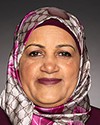I'll start with the evacuations. Obviously, we mentioned what was wrong right off the top, but one of the things we appreciated was the communications we had later on in the process of the evacuations. We were able to talk to emergency management officials in the province. We also had Indigenous Affairs there with a representative, along with our own emergency operations centre personnel that we had set up. We took that initiative because of the experiences of other communities in prior years. We knew the importance of having that emergency operation centre staffed by personnel from the grand council. Richard was part of that, as well as our personnel from our own first nation.
The other thing we learned was that the policy of the province is really something we call the “let it burn” policy, although they don't have that on paper. In our view, in practice, that is what it is—letting it burn to a point that it becomes a threat and then you try to action it. We learned things like that, which need to be changed over the next few years.
As I said in my answer, with the extreme conditions we're running into now, year after year, in terms of climate change, we have to change that thinking. We need to rethink that whole fire management policy and how you manage fires that have the potential to threaten communities or infrastructure, like roads. One of the major arteries into northeast Saskatchewan, going to Creighton and Flin Flon from Prince Albert, was closed for almost the full length.




